Инструменты пользователя
Боковая панель
Содержание
Microphone polar patterns
Hi, I'm Nikita Kipriyanov from Voronezh, Russia. This is a Lesson 1 Assesstement, in which I will discuss, which microphone polar patterns are available and their typical usage.
There is a variety of microphones out there. They differ in type, I mean the technology which converts air pressure variations into alternating electrical current. They also differ in functions, their designation.
What is a polar pattern diagram?
The designation of a microphone correlates with its polar pattern. The microphone polar pattern is the diagram from which we can see, how sensitive it is to sound coming from different directions. The pattern is drawn in a picture like this:
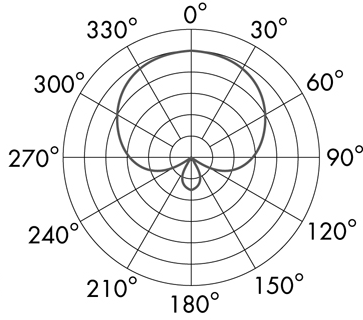 This is a plot made in polar coordinates. There is several different coordinate systems, notably cartesian coordinates, but for plotting our data polar system is the most useful. It shows us directly the corellation between the polar angle and the microphone sensitivity. The polar angle is the angle between the microphone main axis and the direction in question.
Actually the plot should be three-dimentional, but this way it is hard to draw, hard to understand and compare and not much more information, as the true sensitivity graph would be simply the surface of revolution of this two-dimentional plot around microphone axis:
This is a plot made in polar coordinates. There is several different coordinate systems, notably cartesian coordinates, but for plotting our data polar system is the most useful. It shows us directly the corellation between the polar angle and the microphone sensitivity. The polar angle is the angle between the microphone main axis and the direction in question.
Actually the plot should be three-dimentional, but this way it is hard to draw, hard to understand and compare and not much more information, as the true sensitivity graph would be simply the surface of revolution of this two-dimentional plot around microphone axis:
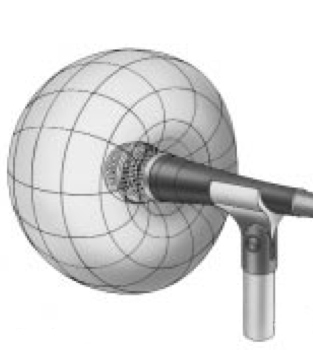 The picture is often splitted in two different parts, a «vertical» and «horizontal» pattern. This is for non-axial-symmetric microphones, often «side-fire» microphones have different patterns for vertical angles and for horizontal angles.
The picture is often splitted in two different parts, a «vertical» and «horizontal» pattern. This is for non-axial-symmetric microphones, often «side-fire» microphones have different patterns for vertical angles and for horizontal angles.
The sensitivity is given in decibelles, as everything in the audio world. It shows how much signal coming from that direction is attenuated when compared with same level signal coming on axis.
It should be noted that the actual polar pattern ofter varies with frequency. For example, patterns in different frequencies are shown in different colors for this AKG C 541B microphone:
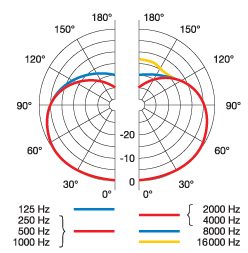
Important ones
These are most important types of polar response:
Omnidirectional
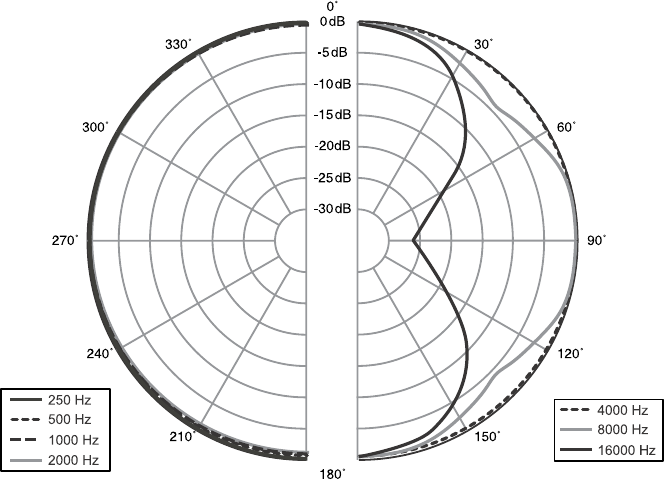 Such microphone ideally will capture equally from any direction. In practice, this is limited by the diaphragm size. When the sound wave length approaches diaphragm size, the microphone behaviour in this wave changes and it starts working more like figure-eight. Small-diaphragm microphone will have this frequency limit higher, and they are directionless for higher frequencies than large-diaphragm.
Such microphone ideally will capture equally from any direction. In practice, this is limited by the diaphragm size. When the sound wave length approaches diaphragm size, the microphone behaviour in this wave changes and it starts working more like figure-eight. Small-diaphragm microphone will have this frequency limit higher, and they are directionless for higher frequencies than large-diaphragm.
For example, this pattern is good to capure «round table» discussions. This microphone can be used also in mid-side recordings, as the «mid» microphone.
Figure of eight
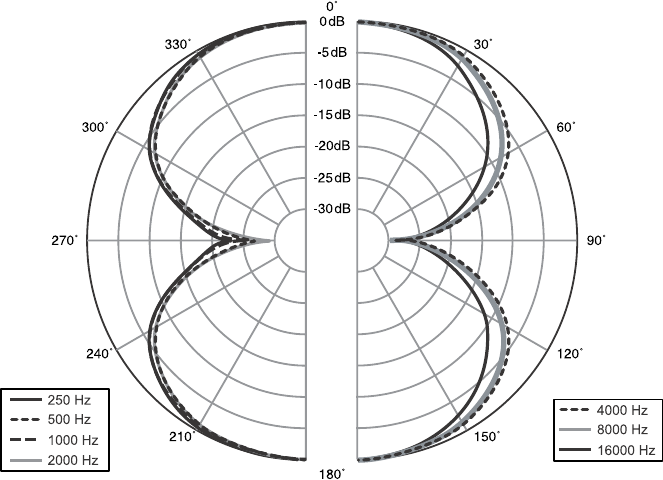 This in natural pattern of ribbon microphones, and can be created in other microphones too. The microphone has an axis, and will capture everything on that axis, no matter «from the front» or «from the rear». The sound coming orthogonal to that axis is not captured.
This in natural pattern of ribbon microphones, and can be created in other microphones too. The microphone has an axis, and will capture everything on that axis, no matter «from the front» or «from the rear». The sound coming orthogonal to that axis is not captured.
It can be used to capture two singers with a single microphone, face-to-face, or two violines in the string orchestra, i.e. when we have to use single microphone to capture a pair of close sources. Otherwise it can be used to capture room acoustics, together with main source. It is also used in mid-side recordings, as «side» microphone.
Cardioid
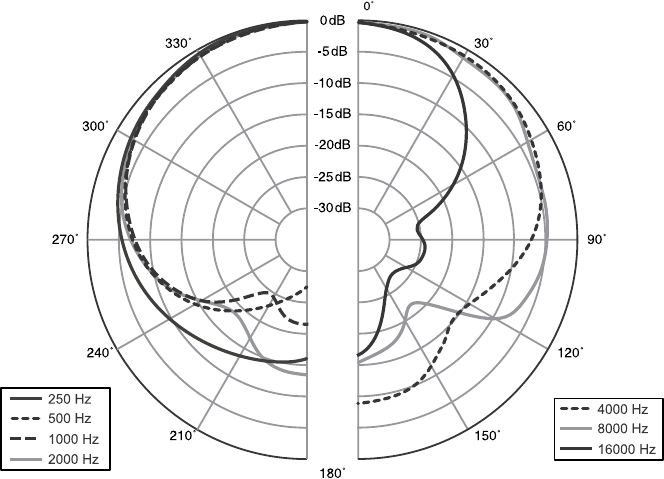 The name was gives from the similarity in shape with the «heart». This curve will be drawn by pen attached to a circle, which is rolling arond another circle of the same radius.
The name was gives from the similarity in shape with the «heart». This curve will be drawn by pen attached to a circle, which is rolling arond another circle of the same radius.
Such microphone should reject anything coming from «back side». Again, the pattern is drawn for «point-sized» microphone, but actual sensor has finite dimensions, so the pattern will change for high frequencies. The microphones are often designed so this change lies outside documented frequency response, so this effect is not so important. Still, for large-diaphragm microphones, it should be accounted.
Other frequency effect is so-called «proximity» effect. When we put the microphone in a close proximity to a sound source, lowest frequencies boost.
The cardioid can be thought as sum of omnidirectional and figure-eight microphones. Signals coming from the front will be in phase and add up, signals coming from the rear will be counter-phase and cancel out.
This type of microphone has the most use. This is typical stage microphone, as we can place it near stage monitor and orient insensitive back-side to monitor, to reduce possibility of feedback. This microphone is also used in single-person captures, to minimize the room acoustics.
Supercardioid, hypercardioid
 The variations of a cardioid. Looks like deformed figure-eight. The hypercardioid has more back-fire (bigger leaf to back side).
The variations of a cardioid. Looks like deformed figure-eight. The hypercardioid has more back-fire (bigger leaf to back side).
They have less use, but are useful to capture single performer with some limited amount of room acoustics.
Shotgun
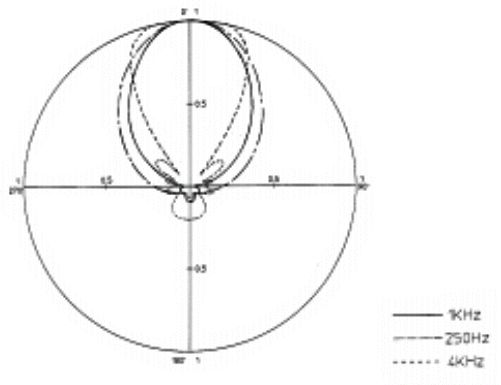 This is rarely useful in a studio, but is often used for «field fork». It has a very thin main leaf and some parasite side-leafs and back-leaf. The microphone should be directed well to the sound source, and will reject almost anything else.
This is rarely useful in a studio, but is often used for «field fork». It has a very thin main leaf and some parasite side-leafs and back-leaf. The microphone should be directed well to the sound source, and will reject almost anything else.
When you need to hear only one person from a screaming crowd, or when you is not able to bring a microphone near interesting source you often have no options but shotgun microphone.
Variable polar pattern microphone
Some microphones also can have variable patterns. The pattern is changed with some switch located on the microphone. Such microphones have several capsules built-in. This can be two cardioid capsules, or one omnidirectional and one figure-eight, or carioid and some of these. Varying polarization amount and direction on each capsule we can combine them as omni, figure-eight, cardioid, sub-cardioid, super- and hyper-cardioid. However, this also works for sound waves with length more than distance between individual capsules.

